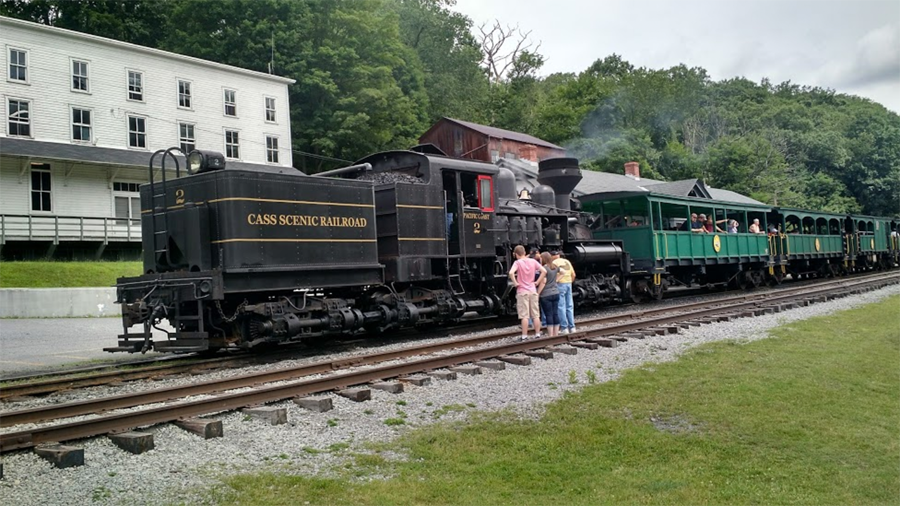
Before I married into a blue collar West Virginia family, I was a bit of a snob.
Chalk it up to growing up in the second richest county in the United States, perhaps. When I went to visit my new grandmother-in-law and she asked which Wal-Mart I got my designer purse from, I took it as an insult rather than, as I now realize, a genuine inquiry.
Now that John and I have been married for four years, these hiccups happen less and less. I no longer refuse to eat cheesy country cooking or think that living in a city means I’m somehow better off (my West Virginia relatives, who live on hundreds of acres of land they own, probably would think the opposite if they saw my tiny apartment). And I’ve come to discover that despite its problems with poverty and drugs, West Virginia can be a beautiful place.
Despite all this progress, something happened this weekend that made me very angry.
John and I were in town for a family reunion. (Despite the cultural divide, there are only about three hours separating us from rural West Virginia.) We went hiking and sightseeing at several natural and historic sites, one being the company town of Cass, West Virginia, which currently has a population of 52 people.
Two wealthy lumber tycoons founded the town around 1900 to transport timber up and down a nearby mountain via coal-powered train (which tourists still ride today). It’s incredible how well the history of the white people who lived and worked there has been preserved.
Before our train ride, I checked out the free museum, which included a big map of the town. There were the big company-built homes, the doctor’s estate and Company Store, and below the river, there was a huge cluster of smaller homes labeled “Colored Bottom.” I looked all around the museum, which included tons of meticulously gathered information and preserved photos of white faces, but I couldn’t find another reference to this part of the town.
Finally, I asked the museum proprietors about it, an older man and woman who have both lived in Cass their whole lives. Turns out, even though the lumber company employed black people in the least desirable jobs, they did not provide housing for them, and historians did not think the black part of town, with its small, rickety houses, was worth preserving. Eventually that whole part of town, which was on the lowest elevation, washed away in a 1980s flood, and the entire black population, I was told, “moved away.”
Fortunately, the curators still had their memories, and told me some colorful racist anecdotes about Cass right after the town’s school integrated in the ‘50s (believe it or not, West Virginia was one of the first states to desegregate schools). But when I asked about why the black residents weren’t part of the historical exhibit, they explained that “Colored Bottom” had its own church, its own stores, and for a while, its own school, so it probably had its own photos, too. Unfortunately, I can’t find even a mention of this part of the town when I look online. This is a part of history that makes people uncomfortable, so it’ll probably just be forgotten.
This encounter left a sour taste in my mouth for the rest of the trip. Finally, I realized why I couldn’t stop thinking about it—every time I visit West Virginia, I am expected to leave my own values at the door and embrace people who are different from me. So when I saw an entire town not practicing that, it made me furious.
It was also a stark reminder for me as a journalist. It’s clear that the story of Cass is only the parts of the story people want to remember. I advocate subjectivity in storytelling, but this is its downside—the possibility that you’re telling only the half of the story you care about.
Going to places where I don’t feel at home and having discussions that make me uncomfortable—these are things that I must continue to do as a journalist. There’s a danger in only telling the story you’re comfortable with, and it’s that the stories of the few and disadvantaged will just be ignored and forgotten.
Journalism already has a class problem, and it’s up to us to not make it worse. It’s important for journalists to challenge themselves to tell stories they’re not already familiar with. We can’t be like the museum curator and say, “they probably have their own photos.” What made me upset about the use of “they” and “them” was that it’s not us and them—the same way I’ve had to slowly learn that me and my new family are not an “us” and a “them.” The curators and their ancestors lived and worked with black residents, so why aren’t these residents included in the historical exhibits for tourists?
It’s up to us to find and tell these stories, because otherwise, these stories might not be told at all.
